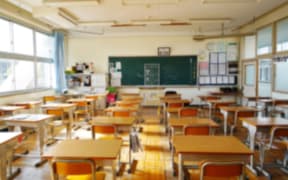
Regular attendance figures continued to be below 50 percent in many school regions. Photo: 123RF
Only 47 percent of students came to school regularly in term 2 this year, an improvement on the same term last year, but one of the worst figures on record.
Ministry of Education figures published on Thursday showed 12.5 percent of students were chronically absent in term 2, meaning they had attended 70 percent or less of their classes, down from 13.9 percent in the same term last year.
The figures were a slump from term 1 this year when 59.5 percent of pupils reached the regular attendance benchmark of attending more than 90 percent of their classes, but better than term 2 last year, when regular attendance reached a low of 39.9 percent.
In term 2 this year only a third of Māori and Pacific students attended school regularly, compared to half of Pākehā students and 59 percent of Asian students.
Boys had a slightly higher regular attendance rate than girls, which was the normal pattern, the ministry's report said.
Primary school students' had a regular attendance rate of 49.8 percent in term 2, while for secondary students the rate was 41.7 percent.
"The Otago, Southland region achieved the highest percentage of students attending regularly in Term 2 2023 (49.8 percent). The Tai Tokerau region had the lowest percentage of students attending regularly (32.8 percent)," the report said.
The ministry said justified absences accounted for 8.7 percent of class time in term 2, less than in 2022, but more than in preceding years and mostly due to short-term illness or medical reasons.
"The incidence of Covid-19 and typical winter illnesses resulted in absences for both students and staff. The level of medical absences suggests that students and their parents continued to follow Ministry of Health advice to stay home if unwell," the ministry's report said.
Unjustified absences reached 6.1 percent of class time, the highest term 2 figure on record but lower than the rates recorded in some other terms in recent years.
"Unjustified absences consist of: explained but unjustified reasons, holidays during term time, truancy/throw-away explanations and unknown reasons. Truancy/throw-away explanation absences were the largest contributor to unjustified absences, making up 2.5 percent of all time in Term 2 2023, down from 3.3 percent in Term 2 2022," the ministry said.
Secondary Principals Association president Vaughan Couillault said it was normal for the term two figure to be lower than term one due to increased incidence of winter illnesses.
"The main reason for students not attending is still illness, short-term illness, that's the most significant contributor and when you talk about term two and term one you know from a common sense perspective, term two you're moving into winter, there's a lot more seasonal illness in term two and term three," he said.
Couillault said the regular attendance figure was still too low but it indicated initiatives aimed at improving attendance were starting to work.
"After the years of disruption that we've had and the nature of the last few years that we've had globally there isn't a silver bullet but it does look like some of the things that we're doing are starting to bear fruit," he said.
Couillault said things like bringing attendance or engagement officers closer to schools, rather than contracting that work to other agencies, seemed to be working well.
Poor attendance a global problem
Other countries have also reported a drop in regular attendance (defined on the same basis as in New Zealand) since the start of the pandemic.
Like New Zealand, Australia experienced its worst-ever regular attendance in 2022 when regular attendance fell to 49.9 percent in the first half of the year having been at 71.2 percent in 2021.
"Across Australia, the national attendance rate and attendance level have been trending downwards for a number of years, with a particularly noticeable decline in both measures in 2022," a research report for the Australian parliament said.
"In 2022, less than half of students attended school for 90 percent or more of available school days in Semester 1.
"Put another way, more than half of students across Australia were chronically absent from school in 2022."
In England, regular attendance reached a low of 55 percent in autumn of 2020/21 but increased to 77.7 percent in the 2022/23 school year.
Research published in September by consultancy firm Public First concluded that the pandemic had radically changed English parents' attitudes to ensuring their children attended school regularly - a finding similar to that reported by New Zealand's Education Review Office last year.
"There has been a profound breakdown in parental attitudes to the idea of full-time school attendance in the years since the coronavirus pandemic," the Public First report said.
"Covid has caused a seismic shift in parental attitudes to school attendance that is going to take a monumental, multi-service effort to change. It is no longer the case that every day matters - at least from the perspective of parents."
The report said term-time holidays had become socially acceptable across all socioeconomic groups in England, poverty driven by the cost-of-living crisis was an underlying driver of poor attendance, and a crisis in youth mental health was making the problem worse.
"Despite popular political and media perception, the increase in parents working from home is not driving the attendance crisis", the English report said.
It said sanctions were seen as irrelevant and antagonistic across all parent groups.






